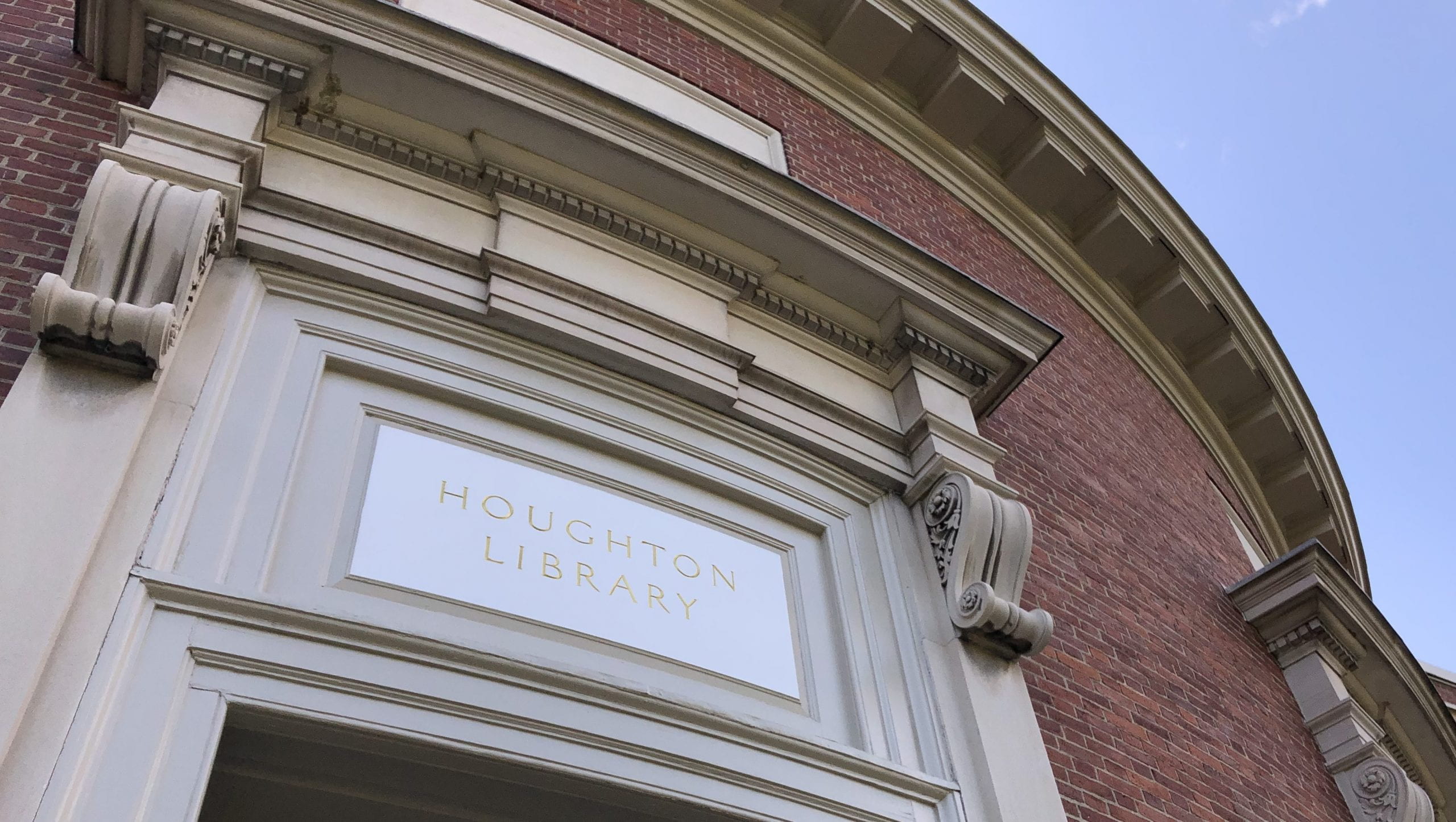Of the nearly four hundred bound sheet music volumes held in Houghton, many were owned by the same person – there are at least seven owned by Edith Forbes Perkins, for example, and over a dozen by Catharine Dean Flint. Just as interesting, however, are single volumes, one of which is highlighted below.

This volume was donated to the Harvard College Library by Thomas J. Kiernan (1837-1914) during the summer of 1872. Kiernan, a life-long Cambridge resident, was no stranger to the Harvard library system: his death marked the end of a fifty-nine year career with the Harvard library. In 1855 at age seventeen, Kiernan took over for his father as a janitor. Census records from the 1860s show Kiernan boarding in Brattle Square and living in Harvard Hall after the Civil War. Kiernan was appointed Head of Circulation in 1877 and received an honorary A.M. from Harvard in 1892. He and his wife, Fannie (m. 1875), had one son, William (b. 1887?), who grew up to work for the Harvard library and the State Library of Massachusetts.
After his death, Kiernan was remembered in the Library Journal (Sep 1, 1914, Vol.39(9)) as having had a tremendous impact on generations of Harvard students and faculty. Additionally, the author noted,
“He [Kiernan] had one advantage that will never be enjoyed by anyone else – he grew up with the library. He knew it first as a small collection of some 60,000 volumes, and he saw it increase to over 600,000. He has watched the gradual introduction of modern library methods and the transformation of the library thereby, and though naturally conservative, he has welcomed every change that was directed toward making the library more accessible and more generally useful.”

In 1911, Kiernan was interviewed for an article on book care for the Boston Globe (December 24, 1911). He shares tips for storing books (closed cases are best, but circulation of air is key!), declares that a dusty book is a happy book (‘it will do less harm than the wear and tear of cleaning”), and provides the inside scoop on bindings and paper (buckram is the new leather, RIP durable rag paper). As for new-fangled inventions that might make the lives of bibliophiles easier?
“Individuals, now that the pneumatic cleaners can be found in many households, would doubtless find it very convenient to run the nozzle of the machine along the tops of the books and shelves, giving their leather bindings special treatment afterward.”
![“Sweeping with a Hose” Boston Globe January 4, 1903. In an October 8, 1905 Globe article (“Nooks in the Boston Library that are Unfamiliar to the Public”), it is noted that “a vacuum cleaner is in process of installation [at the Boston Public Library], which will reach to all parts of the building, and without raising any dust will draw in the dust from every nook and corner and keep the library and books cleaner and sweeter than has ever before been possible.”](https://sites.harvard.edu/houghton-library/files/2016/08/Kiernan-3.jpg)
Two categories of music present in this volume are very common in the mid-nineteenth century bound sheet music volumes collectively: music sung by Swedish soprano Jenny Lind (1820-1887) and music relating to the Civil War. Whether or not Kiernan had the opportunity to hear Lind as she toured the United States, he and other amateur music-makers across the country did have the opportunity to buy music from her repertoire; this sheet music frequently featured her portrait on the cover.

Kiernan’s music from the 1860s ranges from upbeat patriotic (Harrison Millard’s 1861 “The flag of the free : national ode”) to sentimental (“Dear mother I’ve come home to die” by E. Bowers and Henry Tucker, 1863). George F. Root’s “Just before the battle, mother,” published in 1863, has appeared in several of our bound sheet music volumes. Listen to the first verse here.

Lyrics for verse 1:
Just before the battle, mother,
I am thinking most of you,
While upon the field we’re watching,
With the enemy in view –
Comrades brave are round me lying,
Filled with tho’ts of home and God;
For well they know that on the morrow,
Some will sleep beneath the sod.
Chorus:
Farewell Mother, you may never
Press me to your heart again;
But O, you’ll not forget me, Mother,
If I’m numbr’d with the slain.
It was popular enough in the 1860s to be the subject of at least one parody:

What appears in Kiernan’s volume that’s unique of the volumes catalogued to date is the presence of sacred music. This volume ends with six sacred works for three or more voices, several specifically for Catholic worship.

Thanks to the Harvard Archives staff for providing this image and putting a face to the name!

[Thanks to Katie Callam, Pforzheimer Fellow, for contributing this post.]
